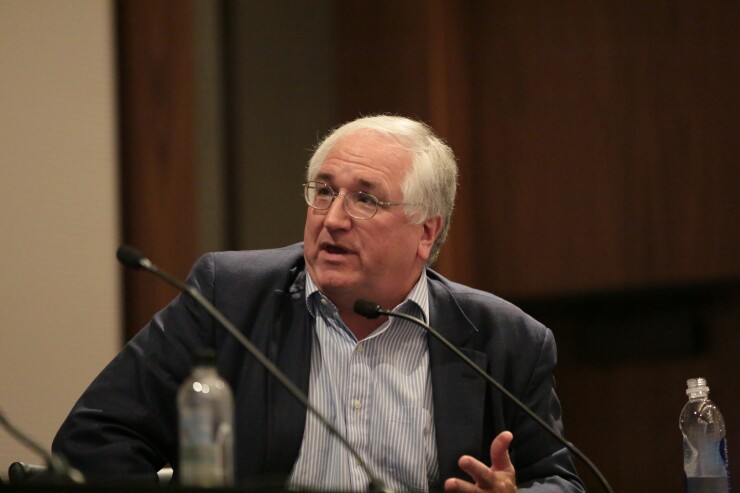The Clearing House is working to add its Real-Time Payments (RTP) network as a third payment rail for Early Warning Services’ Zelle P2P payments service and to enable Zelle bill pay and possibly point of sale transactions.
The
Early Warning is also adding the RTP’s request for payment feature to the Zelle service for a faster clearing and settlement process, and potentially more services such as bill pay and even point of sale transactions.

“We have been working with Early Warning to send money using an alias such as a phone number. We want to be the underlying plumbing for Zelle transactions," said Steve Ledford, senior vice president of product and strategy at The Clearing House.
"We expect it to be in place for P2P next year. It will be up to the financial institution to decide if it wants to connect to RTP," Ledford said in an interview during SourceMedia's annual PayThink conference last week in Los Angeles.
There is an important distinction when using ACH to settle Zelle P2P transactions in that they create an unintended yet critical risk for the financial institution that receives a P2P payment. According to Early Warning’s rules, the receiving institution must make the funds from a Zelle P2P transaction immediately available to the consumer even though it may not have received the settlement funds, which could take days to arrive when ACH is used.
“I think using the RTP for Zelle payments is going to solve the issue of settlement risk since a bank has to make Zelle funds immediately available," said Talie Baker, senior analyst in the retail banking and payments group at Aite Group. "It will make it more attractive for a small bank to offer Zelle. They will also be able to increase the dollar cap or amount being sent on the Zelle network since the funds are settled in real-time."
RTP is an instant payments network, meaning the payments are cleared and settled immediately with no pull-back recourse. It also allows the ability to send messages such as a request for payment, which can enable bill pay.
Ledford also noted that both companies were jointly working on bill presentment for early next year. The “Pay with Zelle” bill pay initiative is intended to help banks retain existing bill pay volume as well as encourage new bank bill pay usage.
There are several advantages for billers to use RTP for bill payments, according to Ledford. By using the secure RTP network a biller would know that any bill on the network was vetted going in by a financial institution and received by the customer’s financial institution. Essentially, this would counter common email bill pay scams.
Another advantage is the request for payment is structured around the invoice such as customer account number and invoice number so there is a surety that the payment will not be rejected, Ledford said. It also puts the customer in control of paying the amount they want and are able to check the accuracy of the bill. Finally, since RTP is an instant payments network, a biller would receive immediate clearing and settlement of the funds into their account the moment a consumer pays their bill.
“Bill pay with Zelle on the RTP network will be huge. However, if you could pay with Zelle at store, it would create a competitive threat to the card networks and that could potentially be even bigger than bill pay,” added Baker.
Paul Amisano, senior vice president of digital and payments strategy for BB&T, said the hurdle to putting Zelle in retail stores is consumer preference for the
“That consumer protection piece is really important,” he said. “That’s one of the reasons right now that you don’t see Zelle at the point of sale.”
Last year, Zelle faced a media backlash after consumers reported being tricked into using the Zelle network to
While a “Pay with Zelle at POS” is a possibility as the two companies work together, the immediate projects are focused on P2P and bill pay.
“When we started out, we knew that just being a faster payment rail wasn’t going to be very compelling on its own. The killer app for us was to create a request for payment. So we are coordinating a pilot that is matching billers and bill payers to build bill payment apps," Ledford said. "We are coordinating this with our colleagues at Early Warning so consumers will be able to use Zelle to make bill payments."





